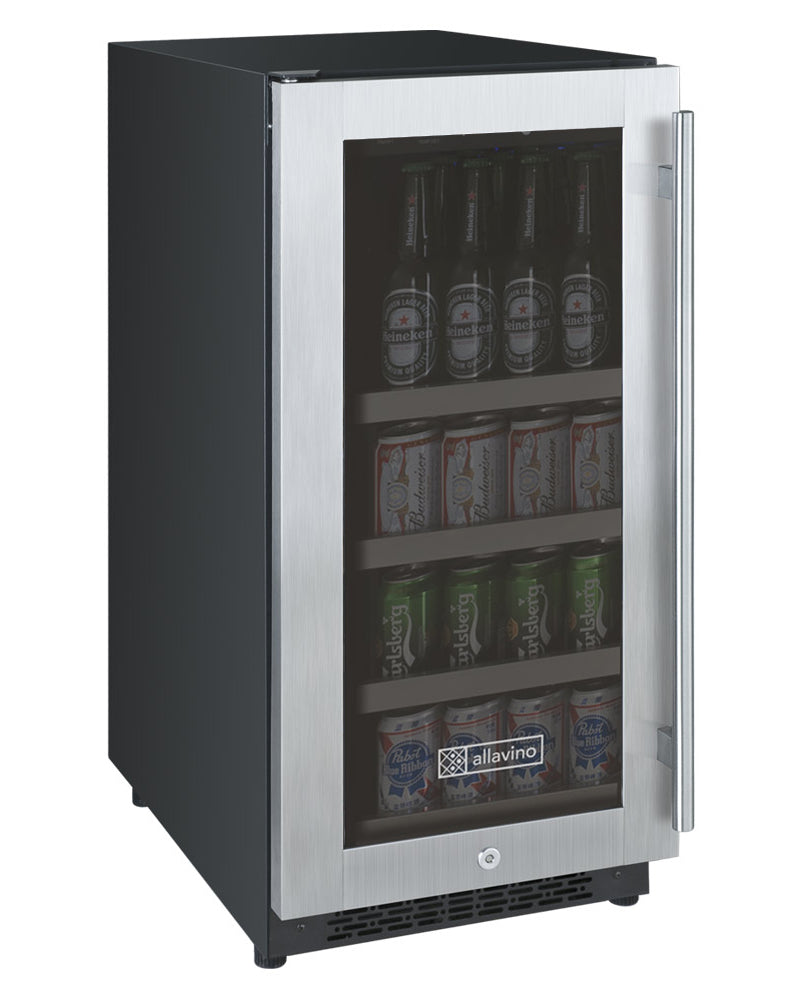How to Pair Wine and Food
You don’t need to be a sommelier to pair your foods with wine. If you really think about it, everything tastes better with wine! Now, there are some general rules that will make your tasting experience significantly better. You want to select your wines based on notes that will complement your foods but where do you start? We have a few simple guidelines for maximizing flavor and producing consistently great pairings.

Elevate the Notes in Your Wine
We can’t emphasize how important it is to serve your wines at their ideal serving temperature. The perfect temperature means even the most subtle notes and aromas are released. You will be able to taste the true flavor of the wine when it is served at its ideal temperature. Additionally, you need to consider that your wine is well preserved. This also requires proper temperature control, along with humidity control, and UV light protection.
This is why we always recommend storing your wines in a wine refrigerator. A wine refrigerator is designed to deliver precise temperature control and here’s an article on why that’s important. However, besides precise temperature control, it also maintains the proper humidity for your wines and protects them from UV light damage! These two factors are extremely important to manage to prevent your wines from spoiling. You can learn more about the top 5 factors that ruin wine here.
Red wines are typically served between 60-65 degrees Fahrenheit to preserve the delicate and rich flavors in these wines. While, white and rose wines are typically served between 50-60 degrees Fahrenheit, enhancing the brighter flavors but taming any acidity. Finally, champagnes and sparkling wines are best served at 38-43 degrees Fahrenheit to preserve the carbonation and carry the light flavors to your palate. A wine refrigerator helps you regulate the temperatures of your wine perfectly without fluctuating the temperature, unlike when stored in a regular refrigerator. For the best taste, ensure your temperatures are within the ideal serving temperatures before enjoying.

The 6 Basic Tastes for Pairing
There are well over 20 different tastes found in food but the most important ones we need to focus on in regards to wine and food pairings are Salt, Acid, Sweet, Bitter, Fat and Spice (Piquant).
Basic Wine Flavors
When it comes to wine, we discuss it in terms of acidity, sweetness and bitterness in varying degrees. We generally categorize them into these three taste categories, accordingly:
- Bitter - Typically, red wines have more bitterness than other wines. Bitterness is not necessarily a bad thing, it is a note that balances many other flavors out and enhances them. Bitter notes can help balance out super sweet, rich, or very fatty foods.
- Acidic - Most wines are acidic but typically, white, rosé and sparkling wines have more acidity. Acidity brings a freshness and brightness to the pairing, cutting through any richness and fatty flavors.
- Sweet - You can find both sweet red and white wines, as well as, ports, ice wines, and dessert wines. Like we discussed above, pairing sweeter wine with sweet foods is a beautiful pairing.
Basic Food Flavors
When pairing food and wines, break down your dish to it’s dominant components and consider the most dominant basic flavors of that component. Salt, Acid, Sweet, Bitter, Fat and Spice, consider which of these flavors are in your foods, then decide whether you want to create a contrasting or congruent pairing. Additionally, matching the intensity of the food with the intensity of the wines will make the perfect pair.
Contrasting Pairing
Contrasting pairings bring balance to your tasting menu. A contrasting pairing means the food and wine actually have contrasting flavors and notes but they pair nicely together because they balance each other out. This is a real example of opposites attract because these opposite pairings really enhance each other’s flavors and they bring out the best in each other.
Congruent Pairing
These pairings are what we often think of when we think of pairing wine and food. Congruent pairings combine foods and wine with similar flavors and notes to enhance those notes even further. Congruent pairings seem easy but with so many subtle flavors in wine, finding a wine with the right notes may be trickier than it seems.

Tips for Pairing Foods with Wine
- Choose a more acidic wine than the food - This will help brighten up and cut through any richness in your food. It balances out the fats in your food and is a great palate cleanser for each bite.
- Select a wine sweeter than the food - Yes, this means even wines paired with your desserts! Have you ever eaten something very sweet and followed it by drinking something less sweet or even sour, like orange juice? It’s a startling difference when paired together. When you combine the sweet with something sweeter it complements one another and doesn’t leave your taste buds in shock. This is a flavor party that your mouth will really enjoy.
- Choose a wine with the same flavor intensity as the food - If you have a food with a lot of bold flavors and spices, you don’t want it to overwhelm your wine. You need to ensure your wine is just as rich and intense as the dish you are pairing it with so they can play off of each other’s flavors instead of one dominating the other.
- Red wines pair best with bold-flavored meats - Red wines and red meats are such a match made in heaven because they’re both so flavorful. Red meats are also often aggressively seasoned to bring out their naturally bold flavor and when paired with rich and intense notes of red wines, the flavors of both are elevated and dance on the palate.
- White wines pair best with light-flavored meats - Alternately, when eating lighter-flavored meats, like seafood, white wine bring out the subtle and light flavors in the meat. Red wines have strong flavors, which will often overwhelm the delicate flavors. Also, the acidity and brightness of white wines helps uplift the sweet flavors of seafood and other light-flavored meats.
- Wine with more bitter notes balance out fattier foods - Fattier foods coat the palate in a very rich and heavy veil, which is best balanced by more acidic and bitter wines. These wines cut through the heaviness and richness and bring in relief from the greasy flavors. This elegant combination will really elevate your tasting menu.
- Match the wine with the sauce over the meat - Sauces tend to have a lot of spices and flavors that will often dominate over the flavors of the meat in a dish. Select a wine that will complement the herbs and spices used in the sauce. Also, consider the base of the sauce in your wine selection. A butter-based sauce will pair best with a more acidic wine with notes of citrus, whereas, a red wine based sauce will pair best with another similar red wine.
- As a general rule, White, Sparkling and Rosé wines frequently create contrasting pairings - Contrasting is not necessarily a bad thing. Contrasting pairings means that while both the food and wine go together, their flavors are different from each other and those differences are enhanced by the pairing. If you’re trying to balance out flavors, contrasting pairing are the best to bring out the best of the wine and food.
- As a general rule, red wines will create congruent pairings - Essentially, red wine notes tend to align very well with foods and have similar notes to many foods. In this case, you want to choose wines with notes that are similar to your dish, this will amplify the flavors in both and it will help your palate focus on particular flavors.
Be Creative!
While these rules are helpful for pairings, you don’t have to follow them at all! Get creative and try various wines with your foods. You’ll be surprised how unexpected notes will go so well with certain foods. For more fun pairing ideas, check out our Wine and Chocolate pairing blog.






Leave a comment